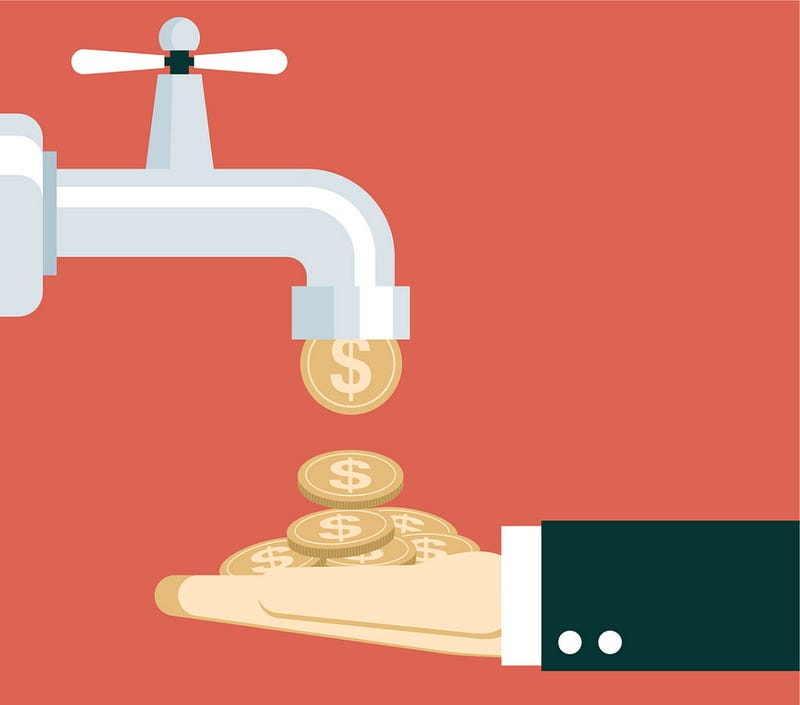The Big Shift: More Corporate Cash Flows into the U.S. than Out
Despite popular belief, all U.S. firms haven’t been sending most of their earnings abroad to dodge taxes, finds a study using IRS data.
Based on the research of Lillian Mills

In recent years, one of the major exports of U.S. businesses has been cash. Several reports, such as one by Bloomberg News, have tallied more than $2 trillion of earnings stashed in foreign subsidiaries in countries with lower corporate tax rates.
So it might come as a surprise that over a decade, American businesses brought more money into the country than they shipped out. That’s one conclusion from new research by Lillian Mills, accounting professor at Texas McCombs, and two recent McCombs doctoral accounting graduates, Lisa De Simone and Bridget Stomberg.
Analyzing corporate returns filed with the Internal Revenue Service, the researchers found that U.S. multinationals imported $1 trillion from offshore affiliates, while they exported $830 million. Close to two-thirds of all returns showed more money coming in than going out.
Those businesses tended to be older and larger ones, which built U.S. factories and headquarters decades ago.
“They still have their headquarters and some assets and information technology here, so they’re getting payments from related parties overseas.” — Lillian Mills
Their report — one of the few to use IRS data on the subject — paints a detailed picture of how domestic firms shift income in and out. It has implications for the latest tax reforms, which aim to prevent more earnings from leaving the country.
The research also offers clues to help IRS auditors spot international tax dodgers. “We wanted to find out what’s different about firms that have more outbound payments, compared to firms that don’t,” says co-author De Simone, Ph.D. ’13, who is now an associate accounting professor at Stanford University.
Tapping Tax Returns
Many earlier studies on income shifting had always suffered a handicap. They relied on public financial statements, which gave sketchy accounts of foreign operations. Mills, a part-time consultant for the IRS, got access to a more complete source: confidential corporate tax returns.
The data came from Form 5471, Schedule M, which lists net payments between a U.S. firm and all its subsidiaries around the world. The researchers offset aggregate inbound and outbound transactions to classify the firm by the degree of its net inbound or outbound transactions.
What’s more, the form breaks payments down into 26 categories. That allowed Mills to explore not just their size, but which kinds of transactions were most significant.
She joined with two doctoral researchers who were working on the problem. De Simone, who had formerly given international tax advice at Ernst & Young and Stomberg, Ph.D. ’13, now an associate accounting professor at Indiana University in Bloomington.
The trio examined 4,266 tax returns from 1,000 companies with at least $10 million in assets, from 2005 to 2014. Some of their key findings:
Outbound Payments Often Bring Manufactured Goods into U.S. Inventory was the largest single category of payment, thanks to the growth of offshore supply chains. Over 10 years, the average U.S. firm bought a net $38 million in manufactured goods from its affiliates.
Foreign Affiliates Pay U.S. Parents for Services. But those corporate offspring rewarded their American parent companies in other ways. They paid an average $56 million in rents and royalties and another $74 million in dividends.
“Companies’ operations in the U.S. are providing services for the company as a whole, things like research and development and managing cash. Their operations in other countries have to compensate them for those services.” — Lisa De Simone
High-Tech Firms Send Funds Outbound. Firms with net outbound payments were concentrated in the technology sector. Their outflow averaged $44 million a year.
In addition to payments outbound from the U.S., high-tech companies also earn profits overseas that they keep there. That’s probably because so much of high-tech manufacturing and markets are international, Mills says. “They want to keep their profits overseas to reinvest overseas.”
Tax Rates Matter. The companies with the highest outbound payments also saved the most on taxes. They paid 14.5 percent less on foreign income than on U.S. income. For other firms, the gap was only 11.2 percent.
That confirms the influence of tax rates on income shifting. “A lower tax differential reduces the incentive to ship money overseas,” De Simone says. Thus, we might see less outbound shifting after tax reform dropped the U.S. rate to 21 percent.
Evading Auditors
The researchers expected that IRS auditors would pay extra attention to the companies that sent the most cash overseas. They found the opposite: Such firms drew fewer audits than average. They made up 37 percent of all returns, but only 34 percent of those audited.
Those companies were mostly smaller ones, the researchers note. They may have been overlooked because, historically, the IRS has trained its guns on larger corporations. But that strategy is changing. In recent years, IRS auditors have focused on certain categories of payments that are ripe for abuse.
One such area is transfer pricing, in which a company can circumvent regulations by selling a product to a foreign subsidiary for an artificially low price. The subsidiary sells it for a much higher price and reaps most of the profits, thus shifting earnings out of the U.S.
Targeting specific kinds of payments rather than just large taxpayers makes sense in an era when Congress has cut budgets for tax enforcement.
“IRS resources have plummeted since the financial crisis. If their pie is getting smaller, there’s only so much they can do.” — Lisa De Simone
New Incentives to Keep Cash at Home
Although net payments were inbound for most of the years studied, the balance was gradually tipping the other way. In 2005, firms overall had net inbound payments of 3.3 percent of worldwide sales. By the study’s final year in 2014, net payments were outbound, at 0.7 percent of sales.
So it’s timely that the Tax Cuts and Jobs Act of 2017 includes several carrots and sticks to discourage income-shifting:
· It cuts the corporate tax rate from 35 percent down to 21 percent, giving businesses less reason to evade Uncle Sam’s reach.
· Several new kinds of taxes will hit U.S. companies if their overseas payments exceed certain thresholds.
· As for the $2 trillion that’s already offshore, firms have to pay a one-time tax on it, of up to 15.5 percent, no matter where in the world it is. Says Mills, “Once you’ve been taxed on it anyway, there’s no additional friction in bringing funds back to the U.S.”
In the long run, the new tax law should be good for companies because it will allow them to move more of their cash back home if desired. “Reducing the tax on bringing funds back home gives more flexibility to companies,” Mills says. “They can pay dividends, they can buy back stock, or they can make investments in capital stock and people here in the U.S.”
“Using IRS data to identify income shifting to foreign affiliates” was published June 2019 in the Review of Accounting Studies.
Story by Steve Brooks


